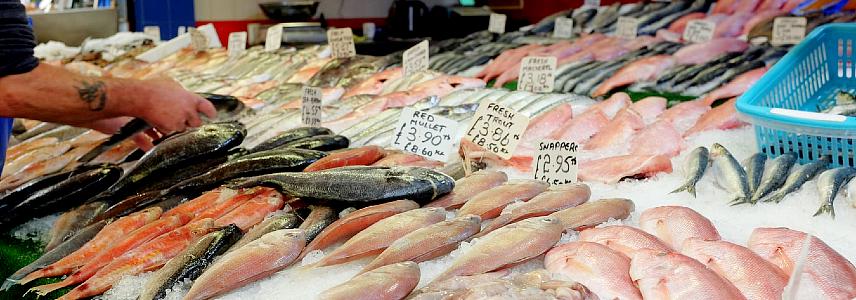Brexit changes European and British seafood market

The United Kingdom (UK) left the European Union (EU) on 31 January 2020. As of 31 December 2020, a new trade deal applies. The deal outlines the changes to seafood product trade between the EU and UK, and imports from non-EU countries.
Fewer UK products on the EU market
The UK is an important supplier of locally-caught fresh fish. Brexit could affect the supply of these goods to Europe. This may provide opportunities for exporters that can offer substitutes. Exporting fresh fish from the UK is difficult right now. This is due to bureaucratic processes, mainly related to health certificates for seafood products. This means that, in the short term, fewer UK-caught products will be available on shelves in the EU. In 2019, the most important fish species exported from the UK to the EU were herring and cod. Herring is difficult to substitute due to its unique market and taste. But cod, for example, can be replaced with MSC-certified hake from developing countries.
In 2019, Europe imported 15 billion USD worth of seafood items from developing countries. The UK was responsible for 1.5 billion USD of direct imports. This made it the third-largest country for seafood imports from developing countries. If you are an exporter and you want to enter the EU market, read the EU requirements for your seafood products.
New procedures and requirements for exports to the UK
If you are exporting to the UK, you may have to adapt your business to the new rules. Brexit and the new trade deal affect customs, tariffs, food safety checks and labelling. If you have a business representative working in the EU, they may not be able to travel to the UK. Make sure your representative has a valid visa or residency permit.
For exporters, it is important to know that the EU and UK will regulate their own food safety standards. This means that there will be border checks to make sure imported products meet the standards. The current health certificates used by non-EU countries are valid in the UK until 1 April 2021. For seafood arriving in the UK on or after 1 April 2021, you will need new health certificates. You can check the changes via the UK government website.
Documents and tariffs
If your seafood product has to travel through the EU to get to the UK, it must enter the EU territory via a Border Control Post. Each shipment will need a Common Health Entry Document. Importers need to notify the UK authorities using the new import notification system: Import of Products, Animals, Food and Feed System (IPAFFS). This will replace the EU’s online platform TRACES.
The UK and EU will not apply tariffs to seafood products traded between their territories. In this case, the traded products must originate from the UK or an EU member state. Exporters from non-EU countries must check with their governments which trade deals and tariffs now apply. You can also read the summary of trade tariffs that apply from 1 January 2021 on the UK Global Tariff Website.
Currently, both the EU and the UK are still dealing with the impact of COVID-19. Logistics and trade from non-EU countries are already challenging, and some policies may still change. Checks on seafood imported into the UK from non-EU countries will remain the same. However, the UK may make changes in the future based on UK-specific risks. Policies are in place for the transition. Still, it is important to communicate with your importer about new trade routes to minimise any delay in transportation and logistics.
Read the EU-UK Trade and Cooperation Agreement (TCA) for all the trade changes.
Seafood TIP wrote this news article for CBI.
Stay informed
To stay informed on the latest developments in the fish and seafood sector, subscribe to our newsletter.